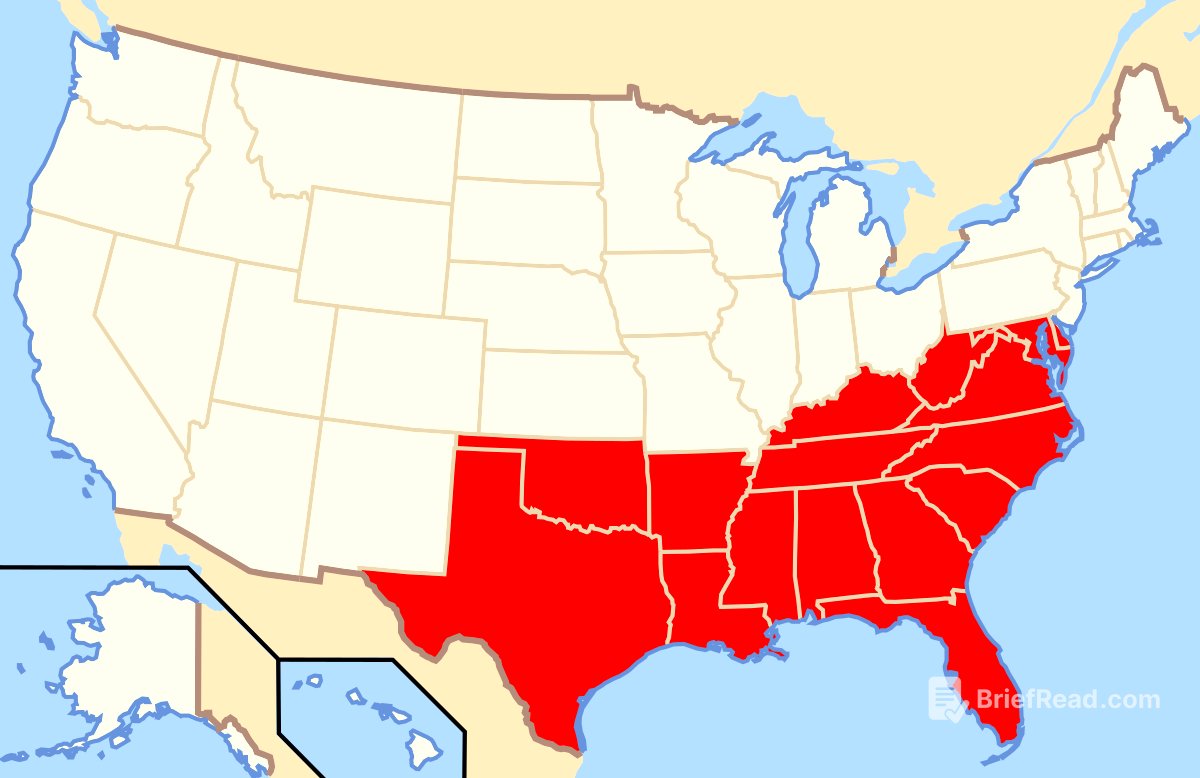TLDR;
The Southern Strategy was a Republican Party tactic in the 20th century United States aimed at winning over white voters in the South by appealing to racial prejudice against African Americans. This strategy involved Republican politicians exploiting racial tensions heightened by the civil rights movement to attract white, conservative Southern voters who had traditionally supported the Democratic Party.
Key points:
- The strategy aimed to realign Southern politics by appealing to racial grievances.
- It contributed to a shift in the Republican Party towards the right.
- Figures like Richard Nixon and Barry Goldwater utilized this strategy to gain political support in the South.
Introduction
The "Southern Strategy" is a term that describes how Republican leaders sought to gain support by appealing to racial grievances of white Southerners. While often attributed to Nixon's strategist Kevin Phillips, he popularized rather than originated it. Phillips aimed to increase Republican power by polarizing ethnic voting, particularly in the South. This approach led to Southern voters electing Republicans at various levels of government, although the Watergate scandal briefly interrupted this trend with Jimmy Carter's election.
Background: Reconstruction to Solid South
During Reconstruction, the Republican Party initially established a base in the South but prioritized its Northern operations. Distrust and lack of respect from Southerners towards Republicans hindered the party's progress. By 1877, Republicans withdrew their support for civil rights efforts in the South, leading to Democratic control in the region. White Democrats employed various tactics to disenfranchise African Americans and poor whites, solidifying their dominance until the Civil Rights Era. This control extended to congressional representation, where Southern Democrats held powerful positions.
Internal Republican Politics
Blacks had a voice in the Republican Party, especially in presidential candidate selection. From 1880–1928, Republican leaders adopted a "Southern Strategy" to maintain a voting base at conventions, leading to federal patronage for Southern blacks. Southern states sent significant delegations to Republican conventions. However, the Lily-white movement ended the Black-and-tan faction's control, and by 1949, black Republicans held power only in Mississippi. Delegate allocation was altered after the 1912 election to be based on how well the party did electorally in those states.
World War II and Population Changes
Significant demographic shifts occurred in the South due to World War II, with urbanization and migration of African Americans to the North and West. Truman's Committee on Civil Rights advocated for civil rights legislation, causing a split in the Democratic Party. Strom Thurmond ran as a Dixiecrat, supporting segregation, but failed to deny Truman the presidency. Population movements and increased voting rights led to higher voter participation and Republican gains in urban areas and states with Northern transplants.
Roots: Eisenhower and Kennedy
Eisenhower's election in 1952 marked a turning point, with strong support from the emerging middle class in the South. He appointed Southern Republican supporters as federal judges who ordered school desegregation. In the 1952 election, Eisenhower won in several southern congressional districts. John Tower's victory in the 1961 Texas Senate special election made him the first Republican elected to the US Senate from the south since the end of Reconstruction.
1964 Election
In the early 1960s, Republicans like Goldwater advocated for a 'Southern Strategy' to gain support in the Solid South by appealing to white conservative voters. Goldwater opposed the Civil Rights Act, attracting states' rights Democrats but alienating voters outside the South. Despite a landslide defeat, Goldwater's performance in the Deep South and Thurmond's switch to the Republican Party signaled a shift in Southern politics.
Nixon 1968 Election
In 1968, Richard Nixon capitalized on divisions in the Solid South, appealing to voters who had historically been beyond the reach of the Republican Party. Recognizing the limitations of directly appealing to white supremacy, Nixon focused on "states' rights" and "law and order," aided by figures like Strom Thurmond. While George Wallace's independent candidacy partially negated Nixon's Southern Strategy, Nixon secured key Southern states by presenting himself as a compromise between Wallace and Humphrey.
Midterms and 1972 Election
In 1970, Nixon and the Republican Party developed a "Southern Strategy" for the midterm elections, depicting Democratic candidates as permissive liberals. While the strategy had limited success, it highlighted the growing importance of Supreme Court nominations in shaping political attitudes in the South. Nixon's victory in the 1972 election, where he won 79% of the southern white vote, marked a significant milestone, with Jesse Helms' election to the US Senate from North Carolina further solidifying Republican gains.
1976 Election
Jimmy Carter, the first major party presidential candidate from the Deep South since Zachary Taylor, won every southern state except for Virginia in the 1976 presidential election. Carter's campaign operated on a strategy that was based around winning the south. His campaign manager, Hamilton Jordan, wrote that the south "provided us with a base of support that cannot be taken for granted or jeopardized" as the "Republicans cannot win if they write off the South".
Evolution: Reagan
After becoming president, Ford chose Nelson Rockefeller as his vice president, which was opposed by conservatives like Reagan. Reagan's campaign struggled initially but gained momentum with victories in Southern states like North Carolina, solidifying his control of the Republican nomination.
Lee Atwater
As civil rights became more accepted, the Southern Strategy evolved, with Republican strategist Lee Atwater discussing the use of coded language to appeal to racial sentiments. Atwater acknowledged that while overt racism was no longer viable, issues like "forced busing" and "states' rights" could indirectly appeal to racial biases.
Bush
From 1980 to 1988, Republican identification among Southern white conservatives increased significantly. George H.W. Bush selected Lee Atwater to manage his 1988 presidential campaign, focusing on Evangelical voters and securing numerous Southern endorsements. The establishment of Super Tuesday aimed to amplify the South's influence in presidential elections, benefiting Bush's campaign and weakening rivals like Pat Robertson.
Willie Horton Attack Ads
During the 1988 presidential election, the Willie Horton attack ads, crafted by Lee Atwater and Roger Ailes, reinforced the notion that Republicans best represent conservative whites with traditional values. These ads played on racial fears and contributed to the perception of Republicans as the party of choice for white voters concerned about crime and social order.
Shifts in Strategy
By the mid-1990s, the Republican Party made efforts to court African American voters, but these efforts did not significantly increase African American support for the Republican Party. Following Bush's re-election, Ken Mehlman, Chairman of the Republican National Committee, apologized for his party's use of the Southern Strategy in the past. The election of Barack Obama saw a new type of Southern Strategy emerge among conservative voters, using his election as evidence of a post-racial era while simultaneously playing on racial tensions.
Scholarly Debates
Scholars debate the primary forces behind the transformation of the Democratic South into a Republican stronghold. While most emphasize the role of racial backlash, some historians argue for a "suburban strategy" driven by demographic changes rather than racial demagoguery. Others suggest that Nixon's strategy was a national one, and that economic development and class issues were more central than racial desegregation in the evolution of the postwar South.









